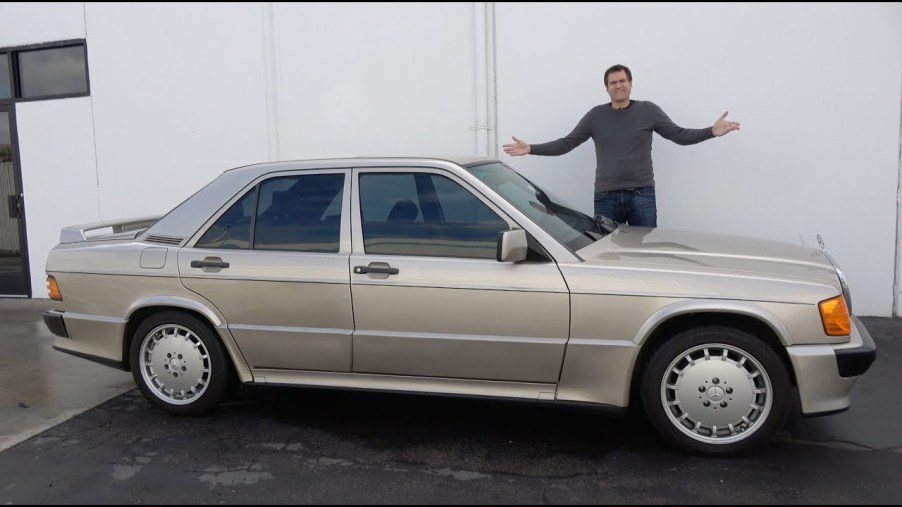
The Mercedes-Benz 190E 2.3-16 Was a Slower E30 M3-Fighter
When it comes to legendary race cars, few names invoke a greater sense of respect and nostalgia than the BMW E30 M3. While this German icon of motorsports holds a special place in the hearts of many gearheads, there was a precursor to the M3 that held its own on the track and the streets. The Mercedes-Benz 190E 2.3-16 was the race car sold on the streets that eventually led to the creation of Mercedes’ AMG lineup.
Racing in the Streets
When BMW debuted the M3 in 1986 it was not as a show-queen dealership car to be clumsily handled by mid-level business executives who just paid off their marketing degree loans. This was a declaration of war, a defiant display of retaliation against BMW’s home-grown rival, Mercedes-Benz. Mercedes had launched the 190E 2.3-16 in road-going trim two years earlier for the purpose of homologation, in order to run the DTM series in Europe. It was the best kind of consumer car a company can release: a detuned race car to meet sales quotas for competition.
The 2.3-16 was initially developed to compete in the World Rally Championship, at a preposterous development cost rumored to be close to $1 billion in today’s dollars. Once Audi began dominating the rally scene with its Quattro all-wheel-drive system, Mercedes put the brakes on rally competition and withdrew from the scene. It wasn’t until several years later that the German manufacturer would begin planning for competition in the DTM touring car series, which required homologation. This would lead to the production of a detuned 320-hp rally engine to fit under the hood of a street-legal luxury car.
Wings to Fly
It was the first of the compact German luxury cars in the U.S. and would appear downright tiny compared to any sedan on the streets today. The 190E came with an advanced aero package including side skirts, fender flares, and a not-quite-ostentatious rear wing. Later models would develop these features more fully, including a much larger wing on the now-scarce Evolution model. The 190E had a self-leveling rear suspension and four-wheel disc brakes, and the power was transferred to the 15″ wheels via a five-speed dog-leg gearbox, meaning reverse was in the upper-left position on the shifter. This feature was intentional in order to give the driver a quick and easy transition between second and third gear, where most racing would presumably take place.
The main feature attributed to the success of the 2.3-16 was the engine, a 2.3-liter four-valve unit topped with a cylinder head right out of the fabled Cosworth motorsports. The head was a custom casting by Cosworth, which managed all of the porting and design. Rated at 182 hp and 173 lb-ft of torque, the 2.3-16 could gallop to 60 mph in 7.9 seconds and listed a 1/4 mile time of 16.7 seconds. The U.S. version of the car would boast slightly lower numbers due to the various emissions regulations that had to be met at the time.
The Birth of a Champion
Upon the debut of the M3, it was quickly apparent that the 2.3-16 was not going to be able to hold up in competition. It was heavier by almost 300 lbs, had 15 hp less, and even a four-inch longer wheelbase. Later 2.5-liter engines were stuffed in the diminutive racer in an attempt to keep up with BMW’s blistering pace, but it would prove insufficient to conquer the German behemoth. Production of the 2.3-16 would cease in 1987.
While the 190E 2.3-16 may not boast the same cult following the M3 enjoys, BMW owners everywhere owe a debt of gratitude to Mercedes for spurring on one of the greatest racing rivalries of all time and giving the public a taste of what true racing pedigree feels like.


